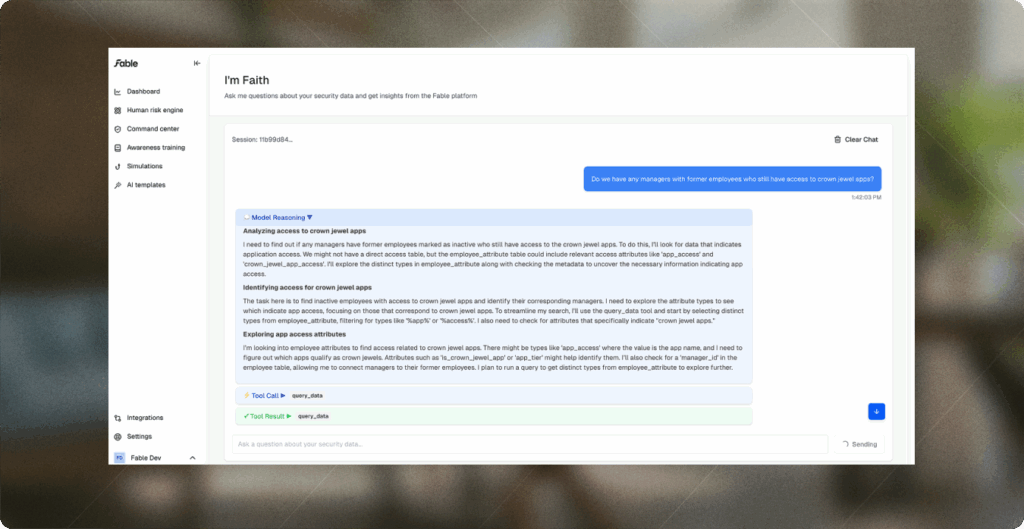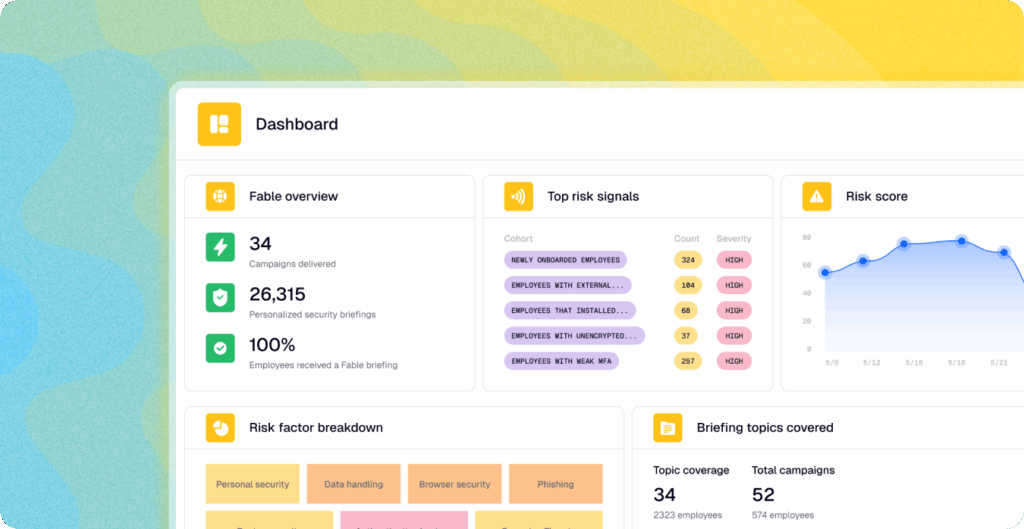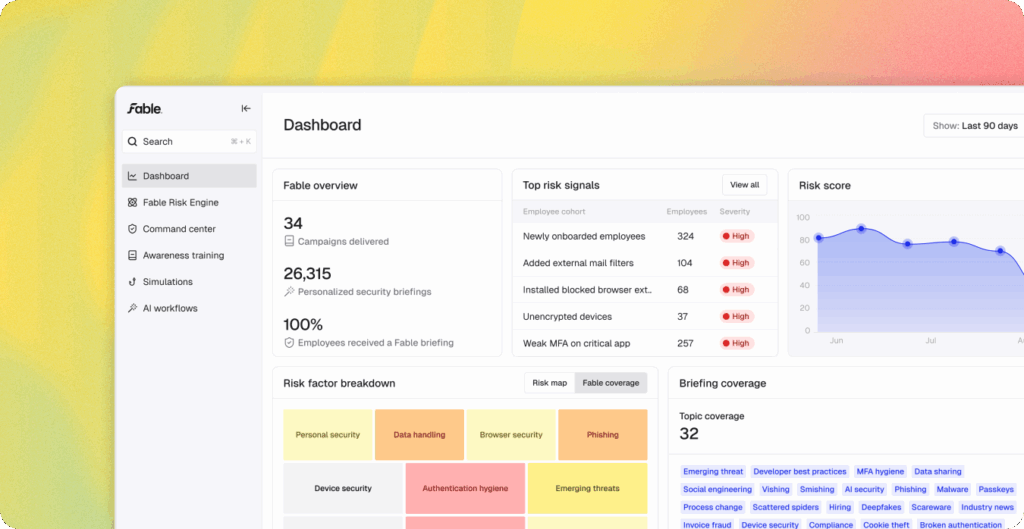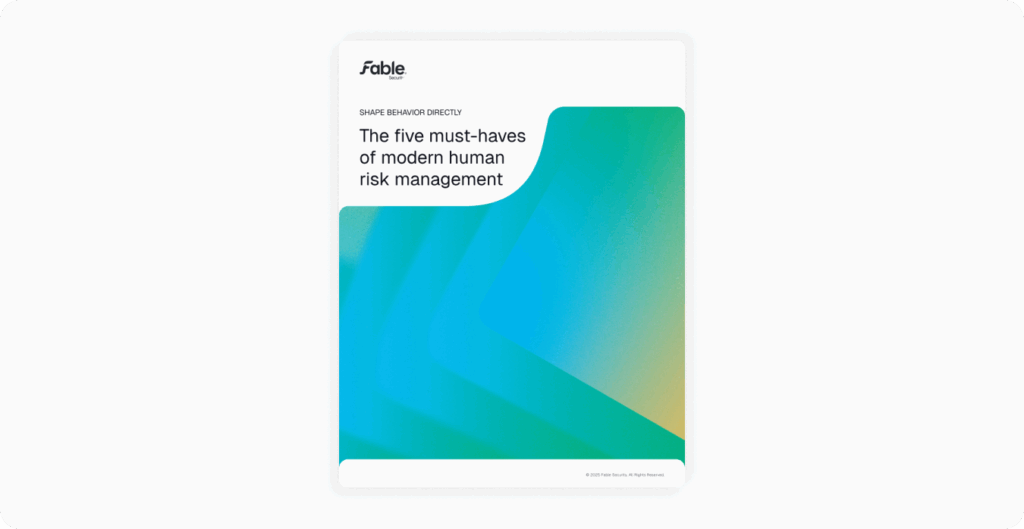The TL;DR
- Legacy tools are based on static rules and rules-based detections
- Fable’s human behavior data lakehouse unlocks powerful, real-time capabilities
- A data lakehouse enables critical, first-time use cases for enterprises, including:
- Dynamic risk scoring
- Early threat detection
- Automated policy enforcement
- Register for our 15-minute webinar on 9/4 at 10 am PT to learn more
When we set out to build the Fable human behavior data lakehouse, we weren’t just thinking about storing information. We were thinking about unlocking entirely new capabilities—ones that legacy systems simply can’t handle.
Here are seven human risk use cases that are only possible with a flexible lakehouse architecture, so data can be available in a variety of formats, including enriched, contextual, and intelligent.
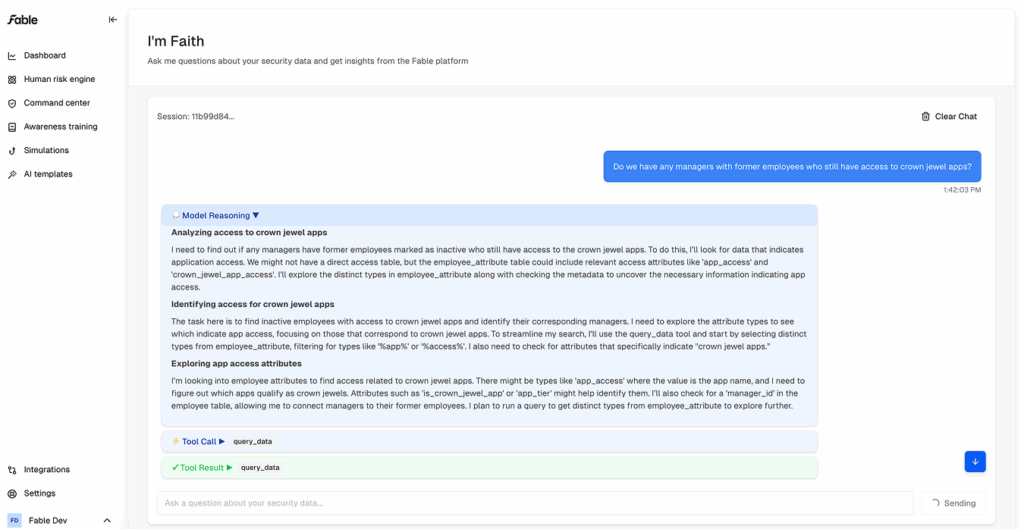
1. Calculate employee risk dynamically
Most platforms score risk based on static rules: “Did John Smith pass or fail our phishing simulation?” But real-world risk is more complex. With a data lakehouse, ingest raw signals from across the enterprise—identity systems, endpoints, workspaces, HR systems, and more—and calculate a contextual risk score that updates dynamically as new data flows in.
2. See emerging threats early
Point solutions often miss nuanced employee behaviors that don’t fit a pre-defined rule and may occur across multiple enterprise touchpoints. For example, if someone with elevated Salesforce access also installs an unsanctioned remote support application, has browsed to malicious URLs, and hasn’t seen the briefing on vishing (all key indicators of a ShinyHunters attack), that combination may indicate trouble. A data lakehouse lets you correlate these signals and flag new risk patterns you haven’t seen before.
3. Identify risky, but business-critical employees
Not all risky users are created equal. With a flexible data model, you can layer in business metadata to distinguish between, say, a contractor with weak MFA accessing Snowflake and a senior engineer in the same system. A data lakehouse makes it possible to prioritize based on actual business exposure, not just technical signals.
4. Personalize interventions at scale
Generic nudges and training don’t cut it. A data lakehouse lets you assemble a full picture of each user—their role, access, team, geography, company tenure, authentication hygiene, data-handling history, credential exposure, phishing simulation performance, and more—and use that context to deliver highly personalized, AI-generated interventions that actually land. That might mean a nudge, a video briefing, or even a live workflow—precisely when and where it matters.
5. Query human risk in plain language
Instead of digging through dashboards, security teams can now ask questions like “Has anyone shared credentials to access our financial data?,” or “Which developers consistently commit secrets or credentials in code?” With generative AI layered on top of a data lakehouse, raw data becomes explainable, queryable, and—most of all—accurate. Having data in both raw and normalized, flattened formats facilitates efficient querying and ensures accuracy, since every result can be traced back to its original source.
6. Turn policy documents into enforcement engines
Most organizations have PDF security policies that nobody reads. With a data lakehouse and generative AI, you can ingest and translate those documents into structured logic—then run that logic against real behavior data to detect violations and deliver interventions. Think of it as policy enforcement without the manual work.
7. Power automated, cross-system remediation
The best part of having a data lakehouse? You don’t just identify risk—you reduce it. We’re evolving toward agentic workflows that act on data lakehouse insights, pushing changes across your stack: triggering a Slack message, disabling access, assigning a task, or updating configuration. It’s no longer just, “Tell me what’s wrong,” but, “Let’s fix it.”
Our human behavior data lakehouse isn’t just an architecture choice. It’s a foundation for a more powerful, precise, and proactive approach to managing human risk. And these seven use cases are just the beginning.
Register for our webinar
Want to learn more about our human behavior data lakehouse? Sign up for our 15-minute webinar on September 4 at 10:00 am PT.

